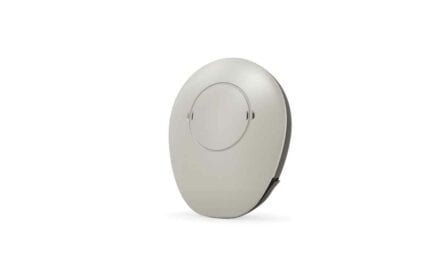Precision surgical implantation of electrodes for the electric-acoustic stimulation of the inner ear can stabilize the long-term residual hearing of severely hearing-impaired people and significantly improve their speech recognition. These are the findings of a study carried out by Karl Landsteiner University of Health Sciences in Krems (KL Krems), according to an announcement on the University’s website. The research, which has been published in an international journal, involved carrying out 18 complex operations on patients, who received cochlear implants using a procedure that leaves the anatomy of the inner ear virtually unaltered. The cutting-edge treatment enabled some of the patients to retain their residual hearing, allowing for supplementary acoustic stimulation in addition to electrical stimulation.
Cochlear implants (CI) are “wonders of modern technology that work by converting sound impulses into nerve signals.” They allow even children and adults who have total hearing loss to perceive sound—enabling them to follow conversations and enjoy music. But not everyone who could benefit from a CI has total hearing loss. Implant candidates include people with partial hearing loss who have some low-frequency residual hearing, but severe loss in the high-frequency ranges. These frequencies are particularly important for understanding speech and successful communication. People with high-frequency hearing loss are not able to understand speech adequately with a hearing aid alone. But technological advances and surgical procedures are now enabling people with this type of hearing loss to benefit from a technology called electric-acoustic stimulation (EAS), which boosts low frequencies purely by acoustic means, while relying on the more complex electrical stimulation of the hearing nerve for mid and high frequencies. A medical team at KL Krems has demonstrated that the technology is effective and can stabilize long-term residual hearing.
Better Speech Recognition
“We are encouraged by the results of the study,” said Professor Georg Mathias Sprinzl, head of St Pölten University Hospital’s Ear, Nose and Throat Department, KL Krems. “They show that it is possible to position cochlea implants in such a way that existing residual hearing can be preserved for years. This improves long-term hearing and significantly enhances speech recognition.”
The study reported that the residual hearing of half of all the patients was still just as good two years after the operation. And for a further 30-40% residual hearing was partially preserved, where the deterioration was most likely due to age-related hearing loss. In one case, the patient maintained their residual hearing, at least partially, for almost five years. “We think that in most cases patients’ low-frequency hearing will be preserved for even longer periods,” said Sprinzl. “However, the longest period we looked at was five years.”
Sprinzl’s team also measured significantly improved levels of speech recognition as a result of the hearing preservation in the low-frequency ranges. This was especially noticeable in comparison with CI patients with no residual hearing, who had therefore received an implant which relied purely on electrical stimulation.
Outstanding Treatment
In addition to the technical component—the EAS implant—the surgical procedure and the skills of the operating surgeon when placing the special electrodes were also key to the success of the treatment. Inserting the implant without damaging the patient’s residual hearing requires excellent surgical abilities as well as experience. “We also administered antibiotics and cortisone preparations to prevent infections and carefully removed blood and bone residue from the cochlea,” said Sprinzl.
Original Paper: Sprinzl GM, Schoerg P, Edlinger SH, Magele A. Long-term hearing preservation in electric acoustic cochlear implant candidates. Otol Neurotol. 2020;41(6):750-757.
Source: KL Krems, Otology & Neurotology





